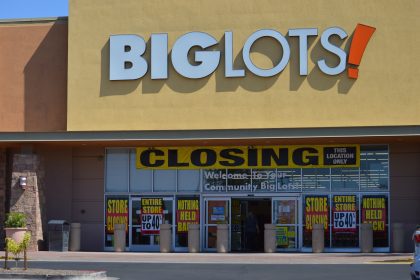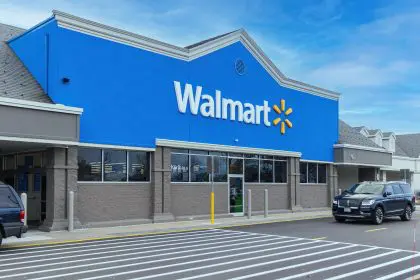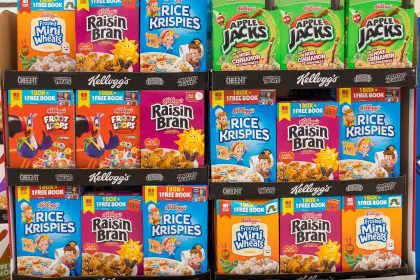Family Dollar has launched a nationwide delivery partnership with Uber Eats, enabling approximately 5,000 of its locations to offer home delivery services across the United States. The strategic alliance comes at a critical juncture for the discount retailer, which faces significant financial challenges as its parent company, Dollar Tree, reportedly seeks to sell the chain for just $1 billion, a striking 89% decrease from its $9 billion acquisition price in 2015.
Digital expansion amid physical contraction
The delivery service initiative represents a significant digital expansion for Family Dollar at a time when its physical footprint is poised to shrink substantially. According to reports from Men’s Journal, the company plans to close approximately 1,000 locations in the coming years as it grapples with operational challenges and intensifying competition in the discount retail sector.
This juxtaposition of digital growth and physical contraction reflects broader industry trends, as traditional brick-and-mortar retailers increasingly embrace e-commerce and delivery partnerships to remain competitive in a changing marketplace. For Family Dollar, the Uber Eats collaboration potentially provides access to younger, more digitally-oriented consumers who might otherwise not frequent its physical locations.
Focus on underserved communities
Family Dollar’s marketing strategy emphasizes the potential impact of this delivery service on underserved communities, where access to affordable essential goods may be limited. The company’s Chief Marketing Officer, Bonita Price, highlighted this focus in communications about the partnership, noting the importance of expanded access and value for customers seeking to save both time and money.
This emphasis on accessibility aligns with Family Dollar’s historical market positioning as a retailer serving neighborhoods that often lack robust retail options. Many Family Dollar locations operate in rural areas and urban neighborhoods with limited retail development, making the delivery option potentially significant for customers with transportation barriers or time constraints.
Promotional strategy and customer incentives
To drive initial adoption of the delivery service, Family Dollar and Uber Eats have implemented a substantial promotional discount. Customers can receive 40% off orders of $30 or more through the Uber Eats app using the promotional code FAMILY40. This limited-time offer appears designed to overcome potential consumer hesitation about delivery fees and to establish new shopping patterns.
Family Dollar products will be accessible through the “retail” or “convenience” sections of the Uber Eats application, positioning the retailer alongside other non-restaurant options that have expanded the delivery platform beyond its food service origins. This placement reflects Uber Eats’ ongoing diversification into retail delivery, competing with Amazon, Instacart, and other e-commerce platforms.
Corporate challenges and uncertain future
The delivery partnership unfolds against a backdrop of significant corporate turbulence for Family Dollar. The reported $1 billion asking price from parent company Dollar Tree represents a dramatic devaluation of the brand since its 2015 acquisition and signals serious concerns about its long-term viability in the current retail environment.
The planned closure of approximately 1,000 locations further indicates the depth of Family Dollar’s operational challenges. While the company has not specified which locations will close or provided a detailed timeline, the scale of the planned closures suggests a fundamental reassessment of the chain’s business model and geographic footprint.
Competitive landscape in discount retail
Family Dollar’s struggles contrast with the relative success of some competitors in the discount retail sector. Dollar General, in particular, has maintained stronger performance through aggressive expansion and adaptations to its merchandise mix, including increased emphasis on grocery and household essentials.
The discount retail landscape has also been transformed by inflation and economic pressures that have driven more middle-income consumers to seek value-oriented shopping options. This trend has created both opportunities and challenges for Family Dollar, as it attempts to serve a broader customer base while maintaining the low-cost operations essential to its business model.
Uber Eats’ retail expansion strategy
For Uber Eats, the Family Dollar partnership represents another step in its evolution beyond restaurant delivery toward a more comprehensive retail delivery service. The platform has increasingly pursued partnerships with convenience stores, pharmacies, and other retailers to diversify its offerings and increase customer engagement across multiple shopping categories.
This expansion allows Uber Eats to leverage its existing driver network and technology infrastructure to capture a greater share of consumer spending beyond meals. By including value-oriented retailers like Family Dollar, the platform also potentially broadens its demographic reach to include more price-sensitive consumers.
The future of value retail delivery
The collaboration between Family Dollar and Uber Eats raises broader questions about the future of delivery services for discount retailers. Traditionally, the economics of home delivery have been challenging for low-margin businesses, as delivery costs can quickly erode already thin profit margins on inexpensive items.
The success of this initiative may depend on Family Dollar’s ability to increase average order values and encourage bundled purchases that make delivery economically viable. The $30 minimum for the promotional discount suggests an awareness of this challenge and an attempt to establish sustainable customer behavior patterns from the outset.
As Family Dollar navigates these complex market dynamics, the Uber Eats partnership represents both an opportunity for reinvention and a recognition of changing consumer expectations around convenience and service. Whether this digital pivot can meaningfully address the company’s deeper structural challenges remains to be seen as the discount retail sector continues its rapid evolution.















